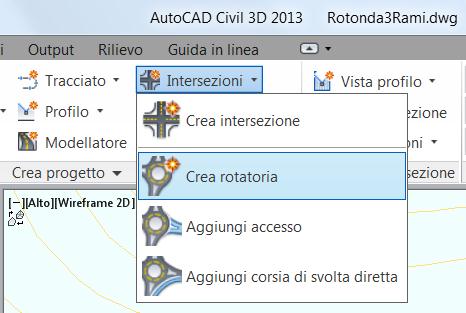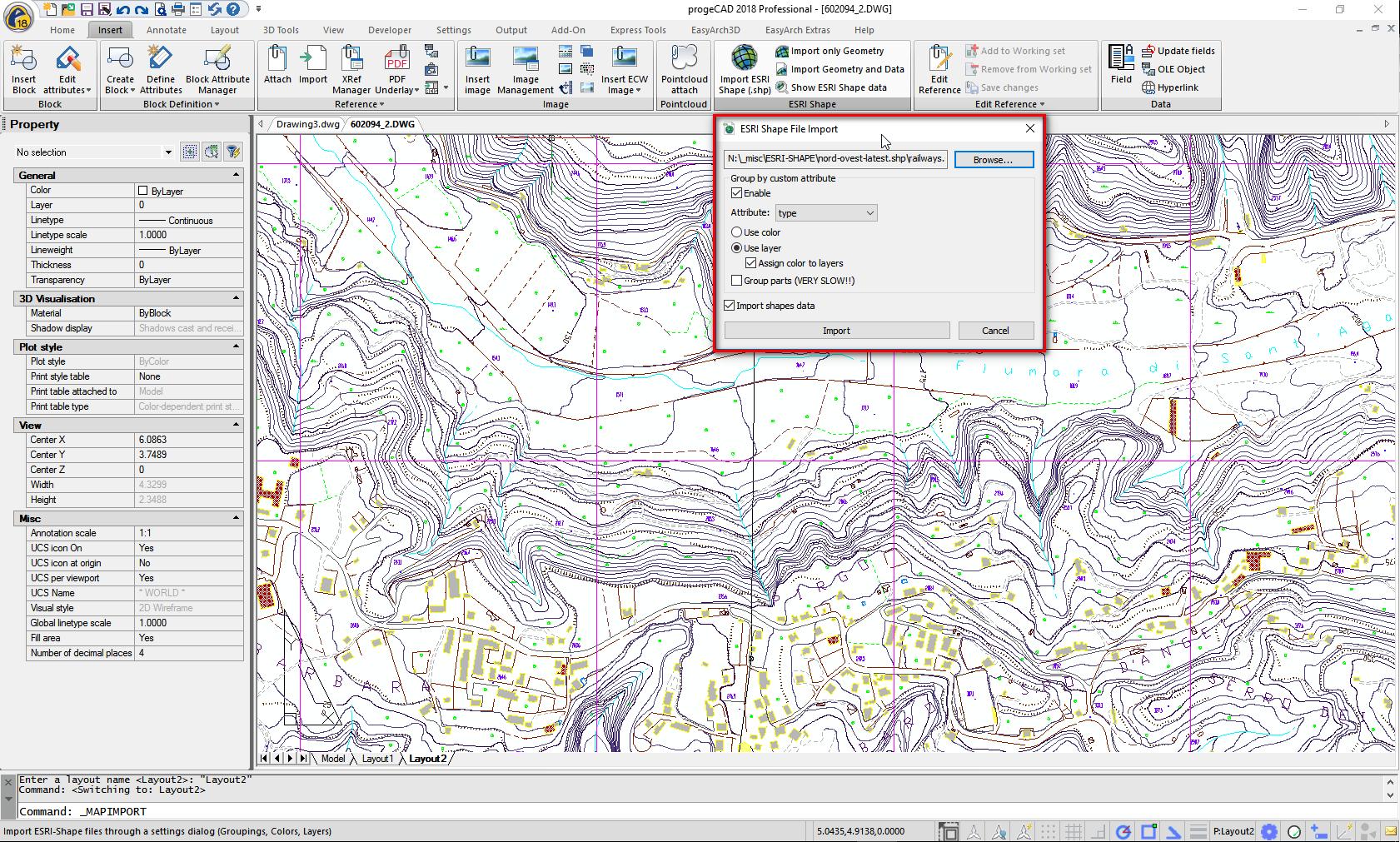Progetto Stradale Completo Autocad 2017
Road Design by Autocad Civil 3D and 3D Max Design - Duration: 27:49. حبيبي يا رسول الله 18,431 views 27:49 Highway.

Macro for AutoCAD (2010-2017), it creates topographic sections and terrain profiles. The input data can be: DTM with triangular mesh, lines and polylines, also 3D. For tracking the section, just draw two points on the cartographic plan. Using the Settings menu you can set: height and distance scale, text height, height of the head line of elevation and distances. For drawing the section you can indicate the entities to be considered: 2D polyline with elevation or 3D polyline.

The topographic sections can exported in *.sec format for the import into different Geostru software: Slope, Georock 2D or 3D, etc. The computation is based on the calculation of the rigid body equilibrium (EQU) of the infinitely rigid foundation (both flexurally and extensionally) compared to the rotation around the sides (edges) of the base polygon on the lean concrete. It is therefore to check if, with respect to each side of the polygon, the ratio between the stabilizing moment and the overturning moment Mstab/Mdestab is higher than the partial safety factor ϒ R = 1.15 (Eurocode). It is ultimately to make an equilibrium to the rotation around each of the sides considering them as a linear fix hinge designing all the moments (overturning and stabilizing) in the vertical orthogonal plane to the individual base sides excluding any of the ground reaction force (that in a limit state of rigid rotation in fact is free from contact with the spread footing). COMPATIBLE WITH LOADCAP 2018.
UNZIP THE FILE IN THE INSTALLATION FOLDER OF LOADCAP 2018. Embankment settlement: The prediction of embankment settlement is a critically important issue for the serviceability of subgrade projects, especially the post-construction settlement. A number of methods have been proposed to predict embankment settlement; however, all of these methods are based on a parameter, i.e. The initial time point. The difference of the initial time point determined by different designers can definitely induce errors in prediction of embankment settlement.
Install Windows 2000 In Dosbox on this page. This paper proposed a concept named “potential settlement” and a simplified method based on the in situ data. The key parameter “ b” in the proposed method was verified using theoretical method and field data. Finally, an example was used to demonstrate the advantages of the proposed method by comparing with other methods and the observation data. COMPATIBLE WITH LOADCAP 2018.
UNZIP THE FILE IN THE INSTALLATION FOLDER OF LOADCAP 2018. Trispace resolves the requirement to effect three dimensional terrain studies through the generation of: digital elevation plans, contoured elevation plans, dynamic sections, three dimensional views, distances or areas and volume calculations.
Thus this program becomes a useful tool both in geological fields due to the extreme facility in creation of longitudinal sections, as in the more strictly topographical one as it imposes no limits regarding either triangulation points nor on the number of sections. Brave Dwarves 2 Download Full Version Free. Further thanks to its integration into geotechnic and geological GeoStru programs it allows the resolution of computational problems connected with Slope Stability and Rock Fall. Software used for Dynamic Penetration Tests, that is the reading, recording, interpretation, storage and the management of any type of penetrometer including new or custom equipment and of in borehole SPT readings.
Dynamic Probing provides functions for the archiving of readings by site and for automatic calculation of the real energy transmitted, including correction for warp and the correlation coefficient with SPT (standard reference tests for geomechanic calculations and geotechnic correlations). Dynamic Probing also BIM compatible with geolocation import ed export in AGS format (Association of Geotechnical and Geoenvironmental Specialists). The software GMS (GeoMechanical Survey) has the aim to represent and process the geo-structural survey of rock masses joints performed in-situ with the method of the compass and clinometer, according to the ISRM recommendations. The joints in a rock mass condition, in a more or less evident way, the mechanical behavior of the rock and of the geotechnical model at the basis of any calculation. It is important, in order to correctly evaluate the stability condition, to have a precise description of the rock structure and joints, both in qualitative and quantitative terms. GeoRock 2D is a software made by GeoStru for the 2D simulation of rockfalls using Lumped Mass and C.R.S.P.
For the Lumped Mass model, the computation assumptions are: plan outline, the slope profile similar to a broken line consisting of straight line segments; point boulder and neglectable air resistance. CRSP (Colorado Rockfall Simulation Program) model has been developed by Pfeiffer and Bowen (1989) with the purpose of modeling the falling motion of boulders having the shape of spheres, cylinders or discs, with circular cross section in the vertical plane of the movement. The reliability of the model was verified by comparisons between numerical results and the results obtained from in situ tests.
Sheet walls are relatively thin, vertical structures, embedded in terrain to a depth sufficient to support an uphill embankment/downhill excavation thrust, including water and surcharges. This type of structure can be constructed of driven prefabricated steel pile sections, adjacent, bored cylindrical piles, and reinforced concrete sheet elements usually produced on site.
The methods used for analysis / verification are: Limit Equilibrium Method (LEM) and Finite Elements Method (FEM). The methods mentioned are of increasing complexity from both the numerical point of view and for the amount of geotechnical parameters necessary for the calculation. MDC is a software product for the design and analysis of reinforced concrete retaining walls either resting on their own foundation or on piles, optionally supported by tiebacks. The geotechnical computation employs the standard geotechnical methods subject to user choice and carries out the verifications prescribed by the selected standard, amongst which global stability even in seismic conditions.
Structural evaluations performs reinforcements sizing and verification with Ultimate Limit State or Allowable Tensions. MDC is simple and intuitive but with amazing features including: pre-design work, easy management of the combinations: GEO, STR,, localization and automatic import of seismic parameters, displacements analysis in dynamicfield, reinforcements editor, 3D view. Import and export of works that should fall in stabilization operations. Software for the computation of bearing capacity on loose or rocky soils, according Terzaghi, Meyerhof, Hansen, Vesic, Brinch-Hansen, Richards et. Al, Meyerhof and Hanna (1978) and computation of bearing capacity factors. Settlements: Elastic ( Timoshenko and Goodier), Oedometric, Schmertmann, Burland & Burbidge, liquefaction using the method of Seed and Idriss (1971). Analysis of soil reinforced with geogrids, calculation of: increase bearing capacity, deformation in the reinforcements, tensile force in the reinforcement for membrane effect.
Brings additional features to the bearing capacity and settlement software like 3D settlements and embankments. (Geotechnical and F.E.M. Analysis System) software for the mechanical analysis of soil using finite elements method. The traditional methods of analysis based on the concept of LIMIT EQUILIBRIUM (LEM) do not allow the determination of stresses and deformations in the analyzed volumes. These limitations have led to the need to integrate the conventional analysis with analysis based on numerical models.
These methods use the numerical evaluation of the problem and do not require simplifications to the calculation. GFAS Extension brings additionial features to the finite element software like waterflow analysis. RC-SEC-EN is a software for the calculation of reinforced concrete sections according to EN 1992-1-1 and EN 1998-1 and eventual national application annexes. This software is a standalone application for checks of reinforced section belonging to beams, columns and walls. In seismic checks is considered the class of ductility demand (DCL, DCM or DCH) and whether or not the section is within a critical region of the member.
If the checks are not seismic you must select the low ductility class (DCL) and so only EN 1992-1-1 is applied. Slope stability software carries out the analysis of soil or rock slope stability both under static and seismic conditions, using the limit equilibrium methods of Fellenius, Bishop, Janbu, Bell, Sarma, Spencer, Morgenstern & Price, Zeng Liang and (DEM) Discrete elements method for circular and non circular surfaces by which it is possible to ascertain slippages in the slope, examine a gradual failure, and employ various models of force-deformation relationship. Reinforcements with piles, gravity and/or reinforced concrete bracing walls, nettings, geofabrics, anchors, and terracing may be specified. Distributed and point loads may be defined.